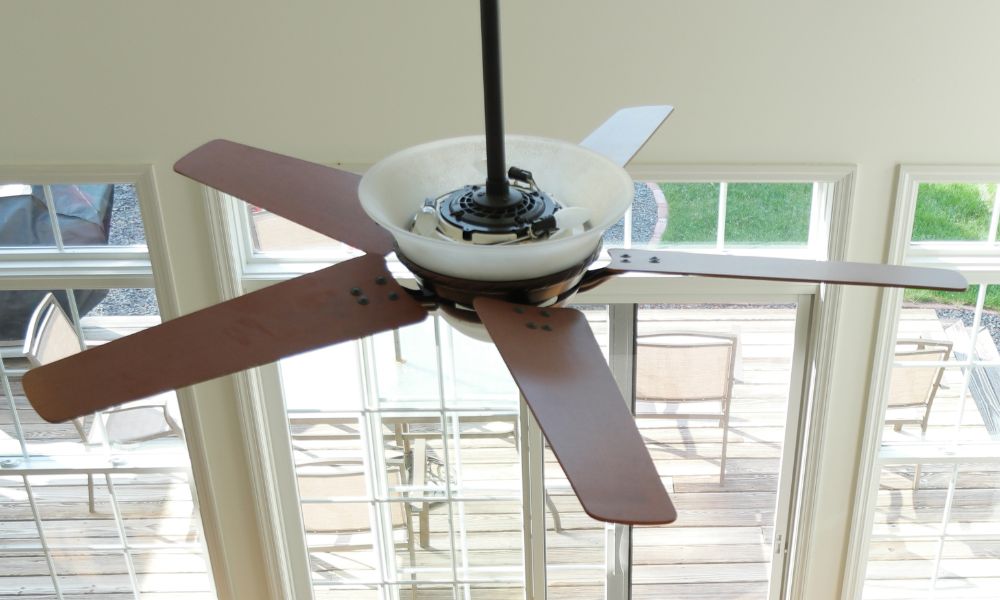Outdoor ceiling fans are a great way to cool off in the summer and make your backyard or patio more comfortable. Unlike their indoor counterparts, they don’t circulate air in the house, but they can cool down in an outdoor space. With so many options to choose from, it can be hard to know which fan is right for you. There are a few things you should keep in mind before buying one. This article will help teach you how to buy a good outdoor ceiling fan that is functional and fits your needs.
The Basics Of An Outdoor Ceiling Fan
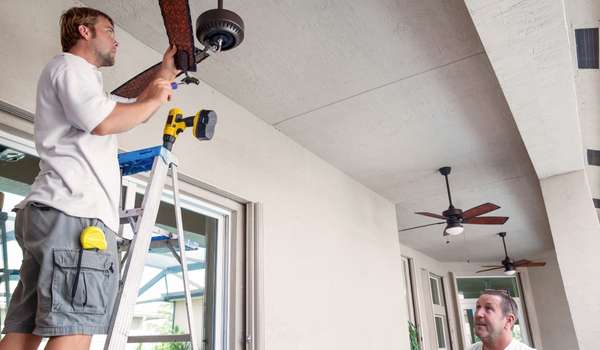
There are a few things to keep in mind when picking out an outdoor ceiling fan. The first is the size of the fan. You want a fan with blades that span at least 10 feet. This will allow you to cool down a larger area. Another thing to consider is the height of the flabellum.
Which should be at least 8 feet high. This allows for more airflow, which will make your patio more comfortable. The last thing to think about is the distance from the edge of the patio or deck to the center of the flabellum blade span. The distance should be at least 20 feet so that you don’t feel like you’re right next to it and get hit by a stray breeze.
Where To Place Your Fan
One of the most important things to consider is where you want to place your fan. There are a few options, which we’ll discuss below.
If you want the flabellum high up in the air, then a hanging fan might be what you need. These fans often come with a remote control so that you can adjust the speed and direction without getting off your chair or couch.
If you want the fan to lower down on the ground, then a tabletop or stand-up flabellum could work better for you.
You should also keep in mind where other objects (like trees and light posts) are when placing your fan. You don’t want your new outdoor ceiling flabellum to get hit by any pesky branches or block any lighting!
Types of outdoor fans
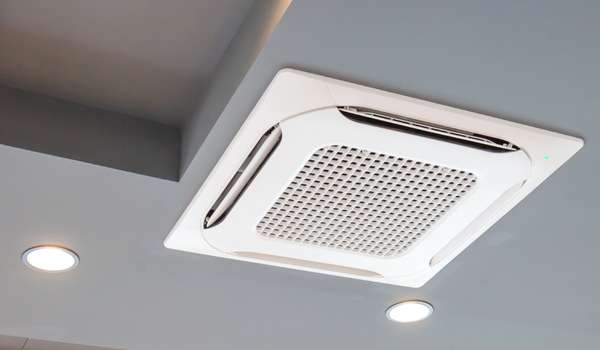
There are a variety of outdoor fans you can choose from. The most popular types of outdoor ceiling fans are the swing-arm, hugger, and flush mount-varieties. The hugger is the most popular type for patios because it brings the flabellumcloser to the ground and has a longer down.
The different styles come with their own benefits. For example, hanger flabellum don’t have any blades on top, so they’re easy to clean under.
Traditional Ceiling Fans
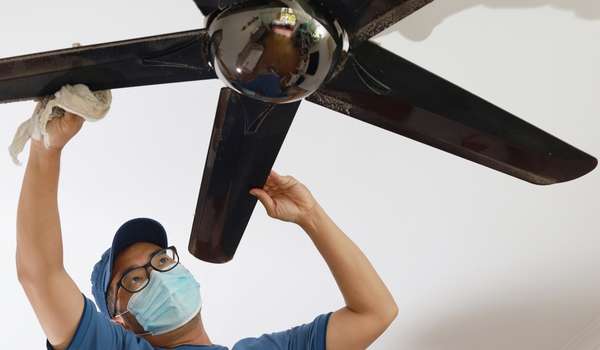
A traditional ceiling fan circulates air inside your home, making it a great option for summer. The blades are pointed down and pull the hot air that has collected in the ceiling, walls, and floors towards them. They then push the cool air back out through the room.
Traditional windmill come in three different blade shapes:
-Straight blades (also called paddle)
-Warm air return blades (paddle-shaped with a curved end)
-Slow-motion blades (curved paddle-shaped blades that rotate at a slower speed).
Outdoor Hanging Fans

Most outdoor hanging fans are flush mount or semi-flush mount. This means that the blades hang down from a single point, usually in the center of the windmill. These fans are popular because they’re easy to clean and maintain. They’re also quite effective at cooling off a patio or deck area by blowing air downward. The downside? They can be quite expensive, especially if you have a large patio area.
Ceiling Fans With Lights
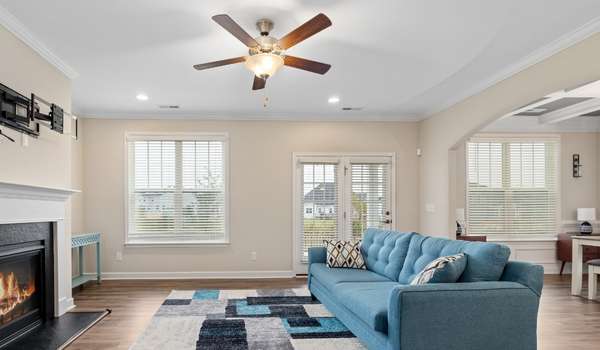
One thing to think about is whether or not you want the fan to have a light. This is a good idea if you plan on entertaining outdoors. Most outdoor ceiling fans come with lights, but there are some that don’t. If this is something you want, make sure the vane you choose has a light kit included with it.
Fan Size And Blade Span
The first thing you should determine is the size and blade span that will work best for your space. The bladespan determines how much air the fan will circulate across the area. Larger rooms require a larger bladespan to cool off. For small spaces, you may want to go with a smaller bladespan for convenience.
Additionally, think about what size space you want the vane to cool off. For example, if you have a porch or balcony, consider using a smaller fan with a shorter blades pan that can be mounted on the ceiling. A larger outdoor space requires a longer blade span.
If you are purchasing an outdoor fan to cool off your backyard or patio, look for vane with a blade that spans between 20 inches and 36 inches long. The average blade span is 28 inches long.
Motor Type And Horsepower
If you plan on using your fan to power a pool pump, the motor should be rated for that use. In addition to the wattage and amps, look for a low start-up speed to avoid increasing water usage at your home.
There are two types of motors: direct drive and belt drive. The type you choose will depend on how much airflow you need and whether or not your fan is exposed to rain or weather. If it’s protected from the elements, then a belt drive is suitable for most people; however, if the vane will be open to rain or snow, then a direct drive may be better.
The horsepower of your it determines how much airflow the fan will have. For example, a 36-inch ceiling fan with a 2-horsepower motor can move more than twice as much air as one with 1 HP. If you want more wind power but don’t have access to an outdoor electrical outlet, consider installing an in outdoor light fixture conjunction with your ceiling vane for extra lighting during parties.
The type of blade (straight/curved) depends on personal preference and which style matches your decor best.
Remote Control Availability

The first thing you should figure out is whether or not a remote control is available, which will make it easier for you to adjust the fan’s settings. Some vane will use a pull chain that can be difficult to reach and hard to change speed with if they are mounted high in the air. If you have a tall ceiling, you may need an extension rod that is sold separately.
Conclusion
When it comes to ceiling fans, there are a lot of options. But with the right know-how, you can buy a leaf that matches your needs while still looking great.
The first step is to figure out where you’re going to put the leaf. You don’t want to get a super small fan if you’re trying to cool a really large room, or vice versa.
Next, take into consideration the type of leaf you want. Outdoor ceiling fans come in a variety of shapes and sizes, from traditional leaf that hang from the ceiling to fans with lights that dangle from the ceiling or hang from the wall.
In addition to figuring out where you want your it, you need to think about how much power it needs in order to operate. The more power it needs, the larger the motor needs to be. So think about how much power your blade will need for the size and type of space you want to cool.
Lastly, make sure that your outdoor ceiling blade has a remote control if you want one!

